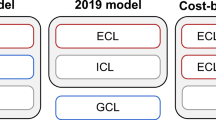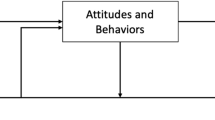Abstract
In an age of increasing digital reading it is interesting that University students’ are not adapting innovative technologies for academic study. This is even more surprising because today’s university students are purportedly digitally native keen to use new technologies in comfortable personal spaces but adhere to traditional paper when studying. There is a distinct paucity of research with respect to how students use technology for academic purposes, particularly independent study. This small-scale qualitative evaluation investigates how undergraduate students respond to a refined Rapid Serial Visual Presentation speed reading application called Spritz, which claims to significantly increase users’ ability to skim read and comprehend content effectively. We evaluated the tool and asked students to express which affordances they would forego to make the technology acceptable. The sample of students focused on those enrolled on a module about academic reading were introduced to Spritz (N = 55). Nine students agreed to take part in the trials. Participants used the Sprtizlet App which enables a reading speed of up to four hundred words a minute to perform reading tasks. The findings suggest the technology is acceptable for certain types of skim reading and scanning, but Spritz did not meet the varied requirements of the participants’’ academic study practices.


Similar content being viewed by others
Notes
The project was sponsored by the University’s Disruptive Media Learning Lab and supported by a senior lecturer—Module Leader, English for scientific purposes.
References
Abdullah, F., & Ward, R. (2016). Developing a general extended technology acceptance model for E-learning (GETAMEL) by analysing commonly used external factors. Computers in Human Behavior, 56, 238–256. https://doi.org/10.1016/j.chb.2015.11.036.
Anderson, C., & Pham, J. (2013). Practical overlap: The possibility of replacing print books with E-books. Australian Academic and Research Libraries, 44(1), 40–49. https://doi.org/10.1080/00048623.2013.773866.
Baron, N. S. (2015). Words onscreen: The fate of reading in a digital world. Oxford: Oxford University Press.
Basaraba, D., Yovanoff, P., Alonzo, J., & Tindal, G. (2013). Examining the structure of reading comprehension: Do literal, inferential, and evaluative comprehension truly exist? Reading and Writing, 26(3), 349–379.
Benedetto, S., Carbone, A., Pedrotti, M., Le Fevre, L., Amel, L., Bey, Y., et al. (2015). Rapid serial visual presentation in reading: The case of spritz. Computers in Human Behavior, 45, 352–358.
Bennett, S., Maton, K., & Kervin, L. (2008). The ‘digital natives’ debate: A critical review of the evidence. British Journal of Educational Technology, 39, 775–786. https://doi.org/10.1111/j.1467-8535.2007.00793.
Braun, V., & Clarke, V. (2006). Using thematic analysis in psychology. Qualitative Research in Psychology, 3(2), 77–101.
Brinchmann, E. I., Hjetland, H. N., & Lyster, S. H. (2015). Lexical quality matters: Effects of word knowledge on the language and literacy skills of third and fourth-grade poor readers. Reading Research Quarterly, 51(2), 165–180. https://doi.org/10.1002/rrq.128.
Britt, M. A., Rouet, J.-F., & Durik, A. (2017). Literacy beyond text comprehension: A theory of purposeful reading. New York: Routledge.
Cheung, R., & Vogel, D. (2013). Predicting user acceptance of collaborative technologies: An extension of the technology acceptance model for E-learning. Computers & Education, 63, 160–175.
Chien, Y., Chen, C., & Wei, W. (2008). Effects of dynamic display, presentation method, speed and task type on reading comprehension of wristwatch screens. Displays, 29(2008), 471–477.
Chifari, A., Chiazzese, G., Seta, L., Merlo, G., Ottaviano, S., & Allegra, M. (2010). A reflection on some critical aspects of online reading comprehension. Informatica, 34, 491–495.
Chou, I. C. (2011). Understanding on-screen reading behaviors in academic contexts: A case study of five graduate English-as-a second-language students. Computer Assisted Language Learning, 25(5), 411–433.
Di Nocera, F., Ricciardi, O., & Juola, J. F. (2018). Rapid serial visual presentation: Degradation of inferential reading comprehension as a function of speed. International Journal of Human Factors and Ergonomics, 5(4), 293–303.
Gilbert, L. C. (1959). Speed of processing visual stimuli and its relation to reading. Journal of Educational Psychology, 55, 8–14.
Goldrick, M., Stevns, T., & Christensen, L. B. (2014). The use of assistive technologies as learning technologies to facilitate flexible learning in higher education. In K. Miesenberger et al. (Eds.), ICCHP 2014, Part II, LNCS 8548 (pp. 342–349).
Green, J., Willis, K., Hughes, E., Small, R., Welch, N., Gibbs, L., et al. (2007). Generating best evidence from qualitative research: The role of data analysis. Journal of Theoretical Psychology., 31(6), 545–550. https://doi.org/10.1111/j.1753-6405.2007.00141.x.
Hills, C., Ryan, S., Levett-Jones, T., Warren-Forward, H., & Lapkin, S. (2016). Occupational therapy students’ technological skills: Are ‘generation Y’ ready for 21st century practice? Australian Occupational Therapy Journal, 63, 391–398. https://doi.org/10.1111/1440-1630.12308.
Hinrichsen, J., & Coombs, A. (2013). The five resources of critical digital literacy: A framework for curriculum integration. Research in Learning Technology, 21, 21334. https://doi.org/10.3402/rlt.v21.21334.
Jabr, F. (2013). The reading brain in the digital age: The science of paper versus screen scientific american. http://www.scientificamerican.com/article/reading-paper-screens/. Accessed 14 Nov 2016
Jones, C., & Healing, G. (2010). Net generation students: Agency and choice and new technologies. Journal of Computer Assisted learning, 26, 344–356. https://doi.org/10.1111/J.1365-2729.2010.00370.
Kay, R. H., & Lauricella, S. (2011). Exploring the benefits and challenges of using laptop computers in higher education classrooms: A formative analysis. Canadian Journal of Learning and Technology, 37(1), 1–18.
Kennedy, G. E., & Judd, T. S. (2011). Beyond Google and the ‘Satisficing’ searching of digital natives. In M. Thomas (Ed.), Deconstructing digital natives (pp. 119–136). Abingdon: Routledge.
Larson, L. C. (2010). Digital readers: The next chapter in e-book reading and response. The Reading Teacher, 64(1), 15–22.
Leman, M., Griffin, M., Pegrum, M., Leggoe, J., Titley, M., & Thomson, S. (2015). Application of spritz to the dynamic presentation of text in project documentation. In Cooperative education for enterprise development (CEED) seminar proceedings.
Li, L., Chen, G., & Yang, S. (2013). Construction of cognitive maps to improve E-book reading and navigation. Computers & Education, 60(1), 32–39.
List, A., Grossnickle, E. M., & Alexander, P. A. (2016). Undergraduate students’ justifications for source selection in a digital academic context. Journal of Educational Computing Research, 54, 22–61. https://doi.org/10.1177/0735633115606659.
Margaryan, A., Littlejohn, A., & Vojt, G. (2011). Are digital natives a myth or reality? University students’ use of digital technologies. Computers & Education, 56(2), 429–440.
Parkes, M., Stein, S., & Reading, C. (2015). Student preparedness for university E-learning environments. Internet and Higher Education, 25(2015), 1–10.
Perfetti, C. (2007). Reading ability: Lexical quality to comprehension. Scientific Studies of Reading, 11(4), 357–383. https://doi.org/10.1080/10888430701530730.
Pugh, A. K. (1978). Silent reading: An introduction to its study and teaching. London: Heinemann Educational.
Rayner, K. (2009). Eye movements and attention in reading, scene perception and visual search. The Quarterly Journal of Experimental Psychology, 62(8), 1457–1506.
Rayner, K., Schotter, E. R., Masson, M. E., Potter, M. C. R., & Treiman, R. (2016). So much to read, so little time how do we read, and can speed reading help? Psychological Science in the Public Interest, 17(1), 4–34. https://doi.org/10.1177/1529100615623267.
Ricciardi, O., & Di Nocera, F. (2015). Not so fast: A reply to Benedetto el al. (2015). Computers in Human Behaviour, 69, 381–385.
Rockinson-Szapkiw, A. J., Courduff, J., Carter, K., & Bennett, D. (2013). Electronic versus traditional print textbooks: A comparison study on the influence of university students’ learning. Computers & Education, 63, 259–266.
Rose, E. (2011). The phenomenology of on-screen reading: University students’ lived experience of digitised text. British Journal of Educational Technology, 42(3), 515–526.
Rouet, J. F., Britt, M., & Durik, A. M. (2017). RESOLV: Readers’ representation of reading contexts and tasks. Educational Psychologist, 52(3), 200–215. https://doi.org/10.1080/00461520.2017.1329015.
Sage, K., Krebs, B., & Grove, R. (2017). Flip, slide, or swipe? Learning outcomes from paper, computer, and tablet flashcards. Technology Knowledge and Learning. https://doi.org/10.1007/s10758-017-9345-9.
Salmerón, L., Vidal-Abarca, E., Martínez, T., Manàa, A., Gil, L., & Naumann, J. (2015). Strategic decisions in task-oriented reading. The Spanish Journal of Psychology, 18, E102. https://doi.org/10.1017/sjp.2015.101.
Schneps, M. H., Chen, C., Pomplun, M., Wang, J., Crosby, A. D., & Kent, K. (2019). Pushing the speed of assistive technologies for reading. Mind, Brain, and Education, 13(1), 14–29.
Schneps, M. H., Thomson, J. M., Chen, C., Sonnert, G., & Pomplun, M. (2013). E-readers are more effective than paper for some with dyslexia. PLoS ONE, 8(9), e75634. https://doi.org/10.1371/journal.pone.0075634.t003.
Schotter, E. R., Tran, R., & Rayner, K. (2014). Don’t believe what you read (only once): Comprehension is supported by regressions during reading. Psychological Science, 25, 1218–1226. https://doi.org/10.1177/0956797614531148.
Spritz. (2016). Spritz website. Retrieved May 26, 2016, from http://Spritzinc.com/.
Tanner, M. J. (2014). Digital vs. print: Reading comprehension and the future of the book. SLIS Student Research Journal, 4(2), 1–14.
Thayer, A., Lee, C., Hwang, L., Sales, H., Sen, P., & Dalal, N. (2011). The imposition and superimposition of digital reading technology. In Proceedings of the conference on human factors in computing systems (pp. 2917–2926). Canada: Vancouver.
Van Laer, S., & Elen, J. (2018). Adults’ self-regulatory behaviour profiles in blended learning environments and their implications for design. Technology, Knowledge and Learning. https://doi.org/10.1007/s10758-017-9351-y.
Vincent, J. (2016). Students’ use of paper and pen versus digital media in university environments for writing and reading—A cross-cultural exploration. Journal of Print Media and Media Technology Research, 5(2), 97–106. (ISSN 2223-8905).
Author information
Authors and Affiliations
Corresponding author
Additional information
Publisher's Note
Springer Nature remains neutral with regard to jurisdictional claims in published maps and institutional affiliations.
Rights and permissions
About this article
Cite this article
Adefila, A., Graham, S. & Patel, A. Fast and Slow: Using Spritz for Academic Study?. Tech Know Learn 25, 1007–1027 (2020). https://doi.org/10.1007/s10758-020-09442-w
Published:
Issue Date:
DOI: https://doi.org/10.1007/s10758-020-09442-w




